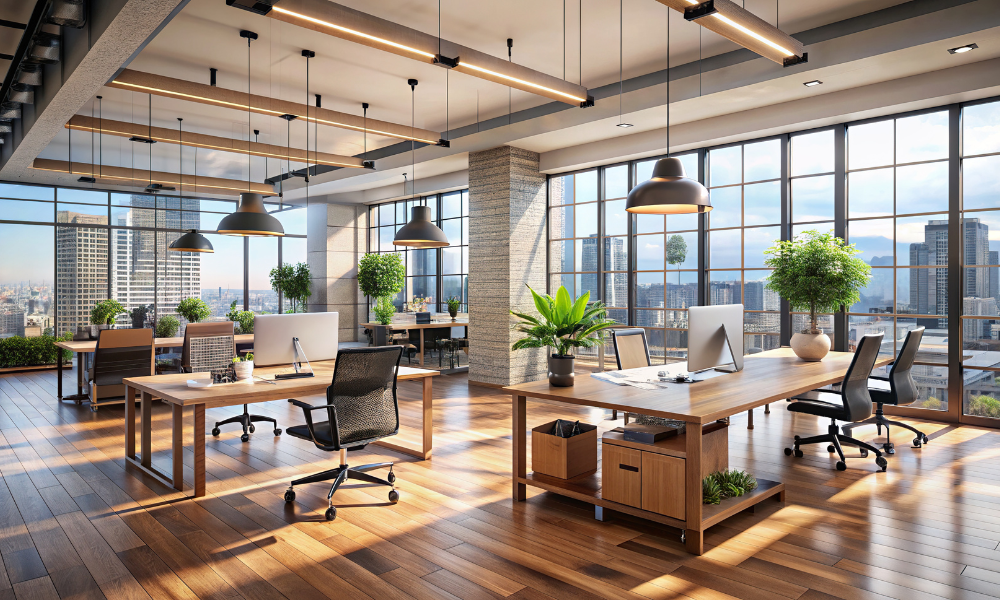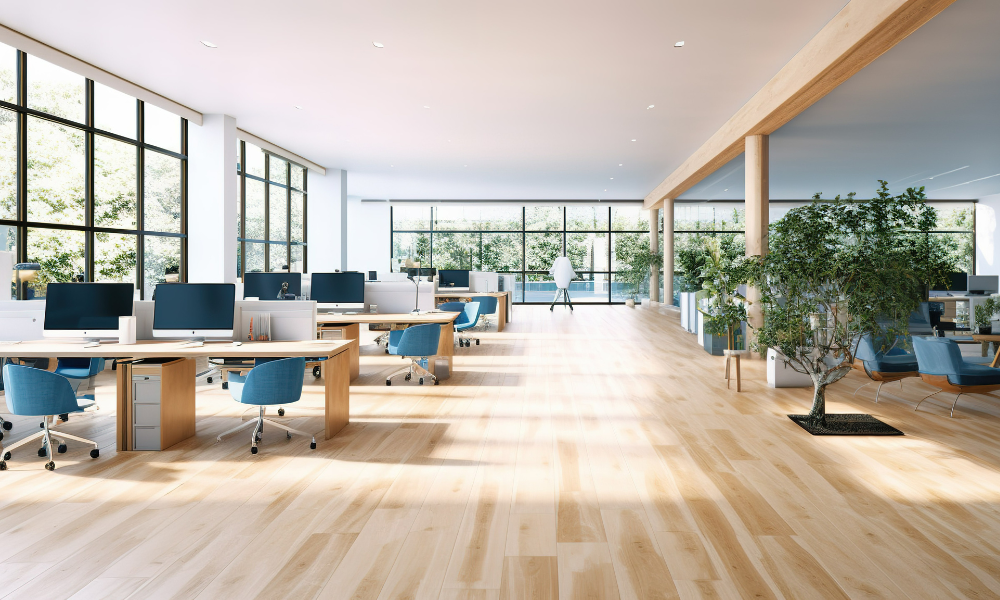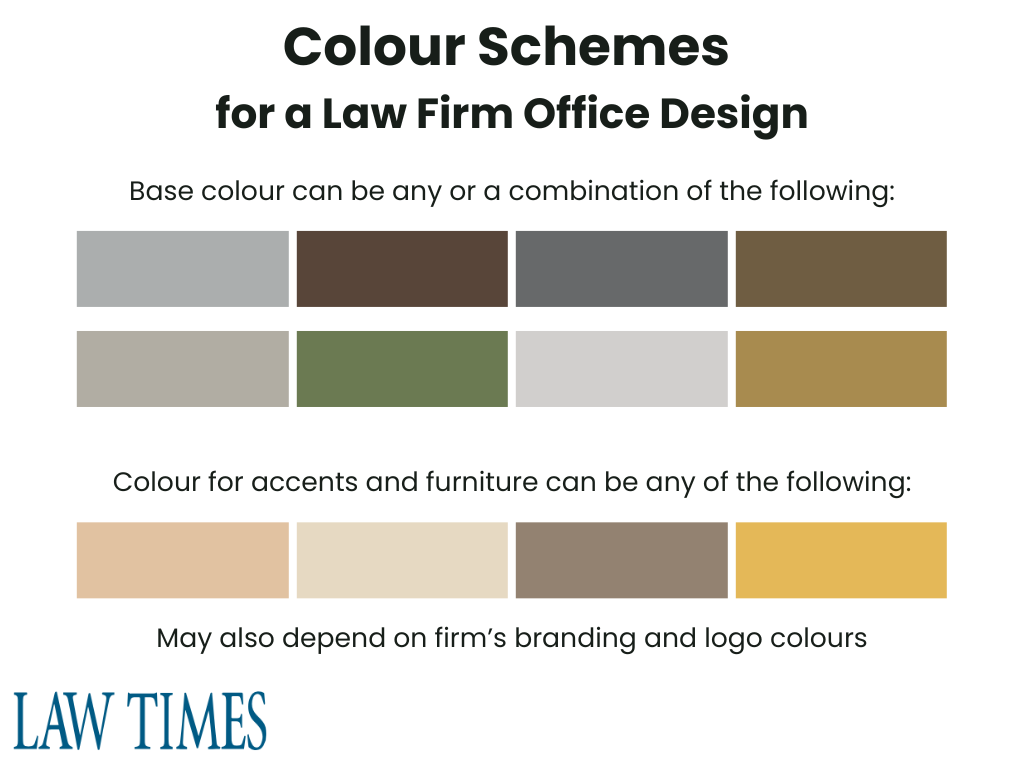
Aside from your usual interior design for office spaces, there are many ways to do your law firm office design. Know more about these designs in this article

Updated: 23 Oct 2024
Innovation is a flavour of the day in today’s legal market; for the most part, the word tends to be heard in the context of efficiency, not culture. However, law firms are now considering office space designs as tools in transforming their culture, breaking traditional norms and stereotypes surrounding the profession.
In this article, we’ll discuss the emerging and modern law firm office design to help you and your firm, either in preparing to move to a new space or in renovating your current one.
In the past, law firm office designs would have been the least of the problems for firm managers and partners. With frequent out-of-office transactions and court hearings, firm workers tend to spend less time in the office. If they do, it’s mostly just to initially meet some clients or do some alone time writing those pleadings and legal documents.
But upon realizing that interior spaces affect the relationships among users and between the firm and their clients, efforts are now put into designing law firm offices. This also coincides with the advent and growth of law firm marketing, which office layouts have become a part of.
Here are some important reasons on why you should consider the office design for your law firm:
These things will be addressed more in our discussions below. As a primer of how law firm office design changes over the years, here’s a video from Canadian Lawyer Magazine, one of our sister publications, on how legal offices are shifting to open concept workspaces from traditional office structures:
You can also bookmark our Practice Management page for other regular resources to help you improve your firm’s day-to-day operations.
With those factors on why a law firm’s office design is important in mind, let’s check some key considerations when choosing a design. While these factors may seem applicable when you’re looking for or designing a brand-new office, this is also applicable if you want to freshen up the way your office currently looks.
In the case of office renovations, there’s no better way to design your law firm than to listen to your current workers. This is especially true for those who are using a traditionally designed office — divided, private spaces, with solid walls and doors, plus some windows on the side. This is compared to open-plan offices, which tend to erase these barriers for more collaborative work among employees.
Whether your workers are more inclined to a classic, traditional design, or to a modern one must be answered not just by the top managers, but everyone using the office space. Aside from this, it will not just ensure that everyone is heard when making large physical changes in the firm, but so that your office space is adjusted to how your firm really works.
This is to keep your law firm's office design grounded in the actual needs (and maybe also the wants) of those using it. Here are some suggestions on how to do this:
In all, this will ensure everyone’s comfort and that the office design is well adjusted for everyone’s work habits. This is undeniably connected to each associate’s and partner’s performance, productivity, and all those KPIs.
Aside from heeding the clamors of the actual users of the office space, another segment which must be kept in mind for law firm office design is the clients. Keeping in mind their perspective when entering the office doors would be helpful when deciding whether to stick to the traditional setup or to move on to something modern.
Here are some suggestions on how to make a client-centered office space for your firm:
Although they may differ in names, there are three common types of office designs that can be used also by law firms and boutiques of all size:
We’ll discuss more on these types below.
Whenever we think of classic, traditional law firms, we imagine a 1:1 office-lawyer ratio, where each person is compartmentalized within their own space. It may also refer to the cubicle layout, which is the usual design for offices, especially in the 80s and 90s. Partitions in every cubicle or office may be permanent or not, depending on its users and the seniority among workers.
Usually, a traditional or classic office layout are done this way:
When it comes to a law firm office design, a classic or traditional design puts emphasis on privacy and giving everyone their own space. The design also reflects the firm’s hierarchy and the tiered process on how things work in the firm.
If you’re considering this type of office design for your law firm, the following are just some of its benefits that you can consider:
A key feature for open-plan or team-oriented offices is that they're a communal workspace. Workers within the office can collaborate more freely by eliminating physical restrictions. When applied in a law firm, lawyers can connect more with each other, including the other employees such as the paralegals and office staff.
Here are some of the other features of open-plan offices:
Here's an example of an open-plan office space:

These kinds of offices are big on visibility, connection, and interaction among co-workers. This premise is the basis on how the office is arranged, such as its physical layout, color schemes, and the use of construction materials.
Below are some advantages when shifting from the classic office design to this modern design:
This video shows a law firm in Canada that adapted to a more modern type of office design, which is more similar to an open-plan or open concept workspace:
For more inspiration on your own law firm office design, you can check out the top law firms in Ontario as references. You can go to this Special Report from Canadian Lawyer Magazine on the Top 10 Ontario Regional Firms to find out who’s who in the province.
A hybrid office design aims to achieve the best of both worlds — nitpicking the advantages of both the traditional and open-plan offices, but without their cons.
For instance, in an open workspace, there are those who would still want their own pod or cubicle. They may be provided with one, without having to eliminate the common spaces for interaction among other employees. Top managers of the firm may also be given their own walled offices, because of the very sensitive matters they may have to deal everyday.
Aside from choosing the type of law firm office design suitable for your workforce and clients, there are other factors that will come to play, such as:

The legal profession continues to evolve, and this does not only pertain to common law and the statutes, but also to how firms do their business. Nowadays, a well-thought law firm office design can transform your workspace and reflect your firm's culture and ideals.
The trend now is moving towards innovation of what has been the usual office space designs and using office layouts that prioritize functionality and client comfort. As such, a law firm office design is more than just aesthetics, but it’s also an investment for your firm’s success.
Our Features page highlights write-ups and insights from lawyers — from doing your own law firm office design to other management methods — to ease your daily legal struggle